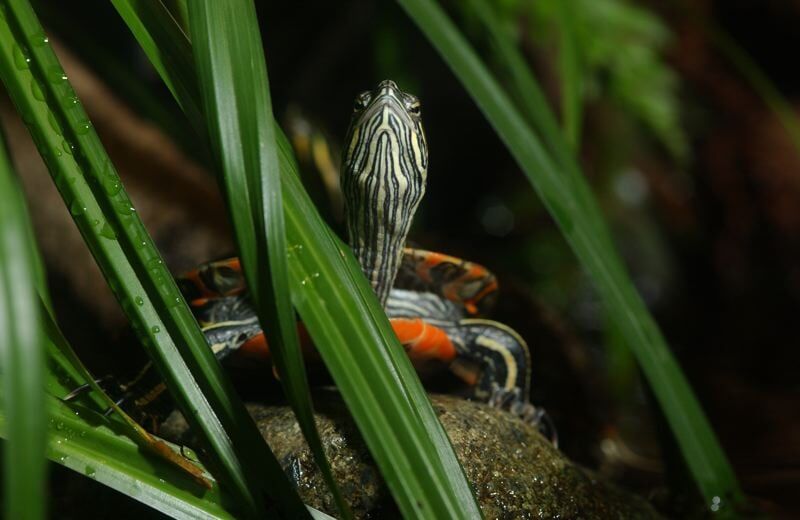Turtles get protective fence to help find nests
Published 12:00 am Tuesday, April 19, 2016

- A western painted turtle basks on a rock at the Oregon Zoo’s Cascade Stream and Pond habitat. With an assist from the zoo’s Future for Wildlife program, conservationists are working to save native Oregon turtles at the Sandy River Delta.
Conservation specialists are setting up temporary fences this month at the Sandy River Delta Park in Troutdale — where turtles soon will be looking for safe nesting places.
Trending
The fences are intended to keep the people (about 100,000 annual visitors) and dogs away from the western painted turtle, which is classified as “critical” on Oregon’s Sensitive Species List.
“Loss of quality wetland and riparian habitats is the main reason the western painted turtle has declined in numbers, but suitable nesting sites are considered a primary limiting factor, in part due to the spread of invasive plants,” says Susan Barnes, a wildlife biologist with the Oregon Department of Fish and Wildlife.
Besides the fencing, the Sandy River Basin Watershed Council has cleared the site of non-native, invasive plants.
Trending
Conservationists say these plants — especially Scotch broom, Himalayan blackberry and reed canary grass — dominate these areas and have led, in large part, to native turtles’ decline by shading out nesting sites.
The watershed council has worked to restore the 1,500-acre delta, where the Sandy River drains into the Columbia River, for more than a decade.
Funds for this spring’s project came from the Beulah Drake grant program of the nonprofit Oregon Wildlife, and the Oregon Zoo’s Future for Wildlife program. The zoo has helped with Oregon native turtle conservation since 1990. Once the fences are in place, the zoo’s volunteer Environmental Conservation Outreach council — along with other citizen volunteers trained by the watershed council — will conduct a first-of-its-kind visual survey of exactly where the turtles are nesting, and get a sense of how many western painted turtles are present.
The information will help guide future restoration efforts and potentially reveal other ways to protect turtles at the delta.
“No turtle nest surveys have ever been done in this delta,” says Bill Weiler, the council’s restoration project coordinator. “Given that they lay their eggs underground, it’s going to be hard to find them.”
Volunteers will be looking for signs of their habitat, which include sun — turtles need sunlight to regulate their inner body temperature, and warmth for their eggs to develop and hatch.
Their nesting sites usually include dirt, gravel and soil that aren’t covered by any tree or shrub canopy.
In essence, turtles are quirky and like their privacy. But it’s the conservationists’ goal to make sure they reproduce and live on for future generations.
“Turtles are beautiful creatures,” Barnes says, “an important part of the food web and healthy ecosystem, and fascinating to watch.”
@jenmomanderson







